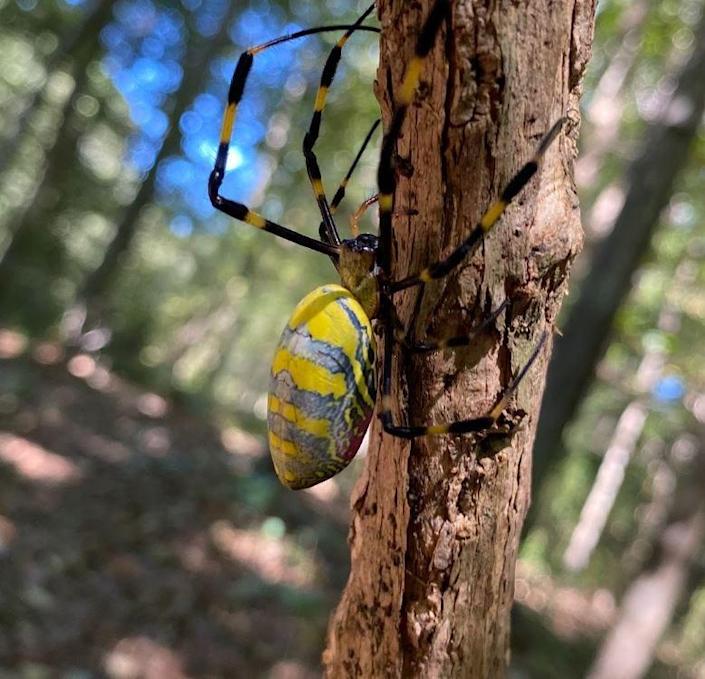If you haven’t met the colorful, massive Joro spider, you may soon be introduced to the invasive species if you live on the East Coast, scientists predict.
The predominantly yellow spider, which can grow to the size of the palm of your hand, was first spotted in Georgia in 2013. Hailing from Asia, there is no clear answer to how it got to the United States, other than that it was probably in a shipping container. But in nearly 10 years, the species has spread rapidly across Georgia and other parts of the Southeast.
Now scientists at the University of Georgia say in a study published in the journal Physiological Entomology that the Joro spider could take over much of the East Coast in the coming years.
“People should try to learn to live with it,” said Andy Davis, a researcher at the Odum School of Ecology in Georgia and co-author of the study. “If they’re literally in your way, I see taking a web down and moving them to the side, but they’ll just come back next year.”

Scientists came to their conclusion by comparing the Joro spider with its relative, the golden silk spider. The golden silk spider, known as the “banana spider”, hails from the tropical regions of Central and South America, but made its way to the southeastern US about 150 years ago and similarly took over the region, making it the “perfect experiment” was used for comparison.
But as much as the population of golden silk spiders has grown, it has yet to expand northward because the spider is susceptible to cold. The scientists collected the two species and measured numerous physical traits, as well as how they adapted to different environmental conditions, including brief periods of sub-zero temperatures.
The results showed that compared to their relatives, Joro spiders had twice the metabolism, a 77% higher heart rate at low temperatures and survived 74% of the time in sub-zero temperatures, while the golden silk spider’s survival rate was only 50%. . Scientists also noted that the species thrives in Japan, with some regions having climates similar to the Northeast.
“While we should not draw any sweeping conclusions from this comparison of just two species, it is at least clear that the Joro spider has a physiology more suited to a cooler environment than its ilk,” the study reads.
Unhappy meal: A McDonald’s customer’s chicken and bacon wrap came with a side of spin
New spider: YouTuber reveals new species of tarantula. The spider crawls out of bamboo stem.
Davis also noted that humans play a factor in how far the species can spread, as they can hitchhike on vehicles and in containers. He said he heard reports of someone “accidentally” transporting a Joro spider to Oklahoma.
The spider’s size may scare people, but experts say they need not worry. They are venomous, but they don’t bite people unless cornered. In addition, their canines do not penetrate human skin.
Entomologist Nancy Hinkle of the University of Georgia told USA TODAY in September that Joro spiders also serve as “pest control”, feeding on insects such as mosquitoes, flies and stink bugs. Birds also feed on the spiders, but the official impact on the Southeast and its species has yet to be determined.
So if you do eventually come across a Joro spider, let them go, says Benjamin Frick, a graduate student in the Integrative Conservation and Sustainability program at the University of Georgia and a co-author of the study.
“There’s really no reason to actively squash them,” Frick said. ‘Man is at the root of their invasion. Don’t blame the Joro spider.’
Contributors: Jay Cannon, USA TODAY; Wayne Ford, Athene Banner-Herald
Follow Jordan Mendoza on Twitter: @jordan_mendoza5†
This article originally appeared on USA TODAY: Giant, Invasive Joro Spider Could Soon Be All Over the East Coast

